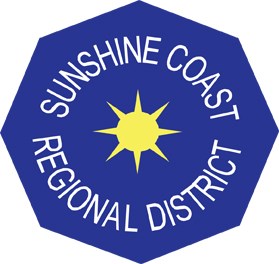A menu of options on how to regulate developments were on offer at last Thursday’s Sunshine Coast Regional District (SCRD) infrastructure committee meeting, revealing directors’ appetite to move ahead with further analysis.
They unanimously voted on a motion, made by Roberts Creek director Andreas Tize, for staff to “put together a list of actionable initiatives to incentivize and or regulate or conserve water in new and existing developments, including xeriscaping, rain and grey water recycling,” and that staff reach out to the other local governments on the Sunshine Coast to “come up with initiatives that could be implemented throughout the region.”
The motion came out of a report that was requested by the board in January after directors raised the question of whether development should be restricted on the Sunshine Coast until the ongoing water shortage is fixed.
While the Coast’s two municipalities are not under SCRD planning and development jurisdiction, they do source their water from the Chapman system (though only partially in the case of Gibsons) and they are the centres of growth. Sechelt’s population growth is two per cent, nearly twice that of the Sunshine Coast in its entirety, according to 2016 census data.
Sechelt director Darnelda Siegers flagged that complicating factor at the meeting. “We’re not responsible for water, it’s not under our jurisdiction, so I’m trying to figure out how we deal with developments that come forward to us given that we don’t actually provide the service. And yet we have the approving officer,” she said. “It’s convoluted.”
A number of tools for regulating growth and managing water were raised in the report, including building financial incentives into development cost charges, establishing water conservation development permit areas, regulating water use, adding rules to subdivision servicing standards, or establishing a standard resolution that would see the SCRD recommend refusal on referrals for subdivision applications. The report considered legislative tools, such as building permits, development permits, zoning amendments, subdivision approvals and water service applications.
At least one director did not accept that growth contributes to the water deficit. “Growth is so small compared to our deficit that you might add one hour of stopping us moving through a stage,” said Area A director Leonard Lee. “It’s exactly as the report says, we’ve got climate change to deal with,” he said, adding that the 2016 mandatory environmental flow rate increase has also been a factor, since it diverts Chapman Creek water from the regional water system. “Growth is not the issue,” he said.
Tize said he agreed with Lee before proceeding with his motion.
Elphinstone director Donna McMahon, meanwhile, focused on the other areas contributing to summer water use, which is higher than in winter, including tourism, landscape watering, leaks on private property and potable water use when alternatives are available, such as on sports fields. “Knowing that these are four existing issues, what are we doing to address each of these issues?” she asked.
Infrastructure general manager Remko Rosenboom replied that they are working with both BC Ferries and Sunshine Coast Tourism this summer to “get the word out to tourists and seasonal residents.” He said they are also working with Sunshine Coast Tourism to connect with accommodations providers. Water restrictions address the irrigation issues and addressing leaks is “ongoing work.” The SCRD is “currently exploring opportunities to use well water.”
Another report on the matter is expected in June.



